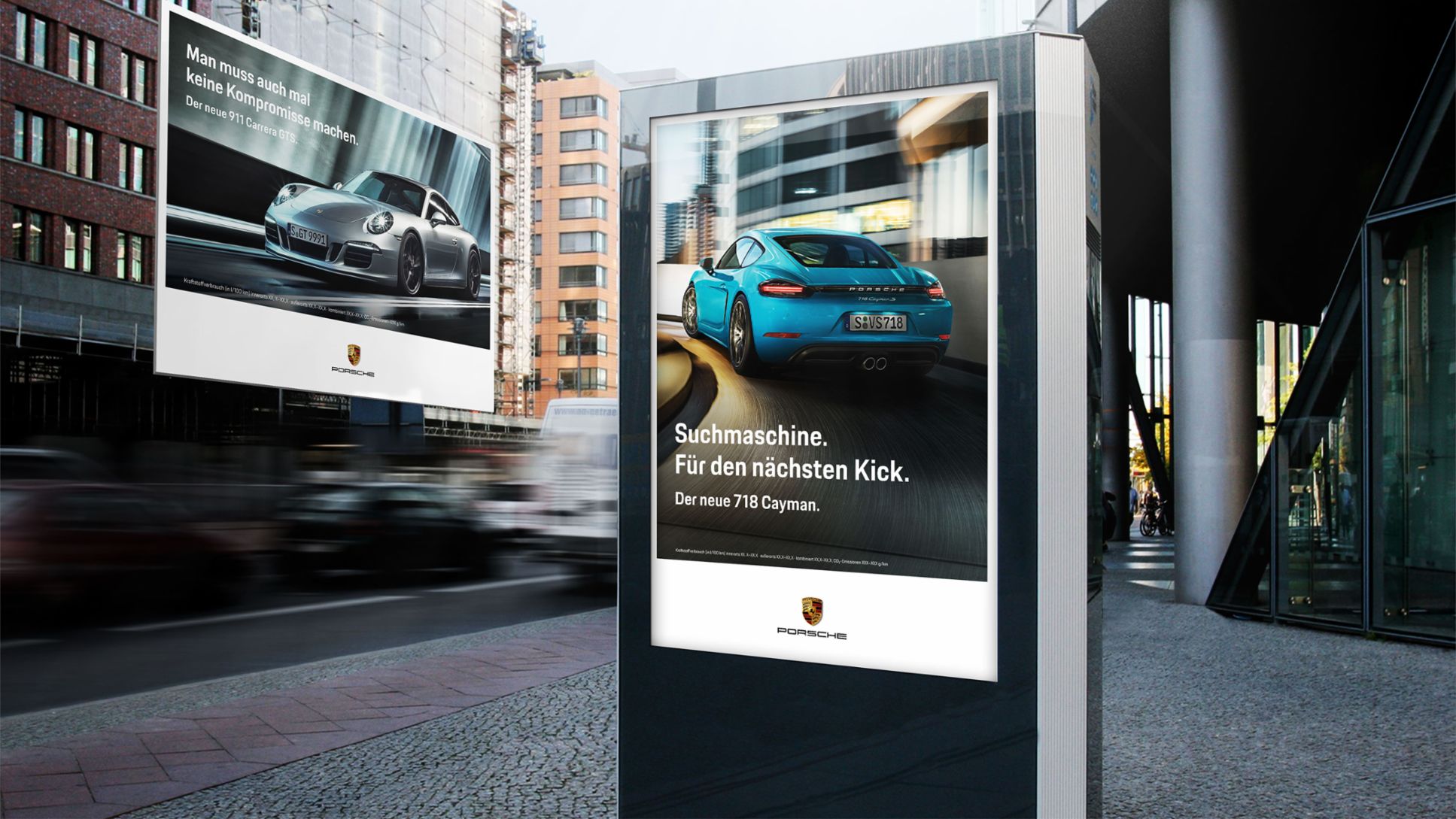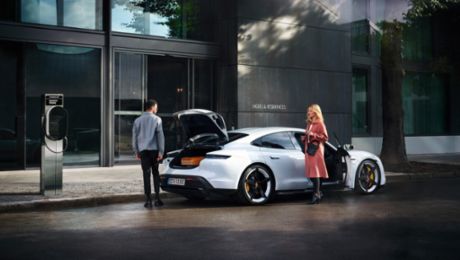For the past seven years, the marketing expert Dr Kjell Gruner has been the head of marketing at Porsche. Now the 50-year-old former management consultant has changed the face of the sports car brand owned by the Volkswagen Group. With a new corporate identity, Porsche will lead the way into the digital and electrical age.
So, Dr Gruner, why have you modernised Porsche’s corporate identity?
At Porsche, digital communication channels are of great importance, be it in the vehicle itself, on the Internet or on social media. We realised that our previous corporate design was not working as well as it could here, and the new corporate identity has been optimised across all digital channels. The clearest example is our new corporate typeface, which will be used consistently across vehicles, printed documents and our online presence. A second important point for us was to bring out the emotiveness of the brand even more powerfully, for example by using even larger images.
How long did this process take?
We spent around six months developing the new corporate design and approved it at the end of 2016. We made the conscious decision to wait until September 2017 for implementation, so as to allow the conversion to take place at the same time across as many channels as possible. The transition phase will end in around a year, by which point we would like to have converted all areas of application, especially in the vehicle and at dealerships.
Which design agency did you work with on the project?
MetaDesign from Berlin developed the new corporate design for us, in close collaboration, of course, with our global lead agencies in the creative and digital fields.
What do you want to achieve with the new look?
If I were to pick out three key points, they would be a consistent, modern appearance across all channels, especially in the digital sector, to convey even more emotion, for example through the use of large images, and not to forget our roots, but rather to reinforce them. In the last 20 years, Porsche has created a standard brand appearance, for example with a large white space, a frame around the images or the strong protective space around the Porsche crest. We have allowed these points to evolve and, from our point of view, we have strengthened them even further.
Does the new corporate identity affect only the brand’s external visual appearance, or will we see changes to the company’s internal communications and attitudes as well?
The new corporate design will also be applied universally in products and internal communications. We have worked closely with colleagues from vehicle design and public relations. The new corporate typeface is called “Porsche Next”.
The “Next” suffix also features in the new brand typeface of Škoda, your sister brand in the VW Group. Is that just a coincidence?
You would have to ask our colleagues at Škoda… in all seriousness, there is no strategy behind it, but of course we discuss strategic topics at various levels within the group. It may be that somebody at Škoda liked the name “Porsche Next”.
The new corporate identity provides a framework for future advertising campaigns. Does this not restrict your advertising agencies a little too far?
I don’t think so. Porsche has always has a strong focus on forming a consistent brand image, and that applies all over the world from Asia to Europe to the USA. For me, creativity is less a matter of form, and much more about good stories and relevant content.
Consumption data
718 Cayman S: Fuel consumption combined 8.1 – 7.3 l/100 km; CO₂ emissions 184 – 167 g/km
911 Carrera GTS: Fuel consumption combined 9.4 – 8.3 l/100 km; CO₂ emissions 212 – 188 g/km
Cayenne: Fuel consumption combined 9.2 – 9.0 l/100 km; CO2 emissions 209 – 205 g/km
Cayenne S: Fuel consumption combined 9.4 – 9.2 l/100 km; CO₂ emissions 213 – 209 g/km




